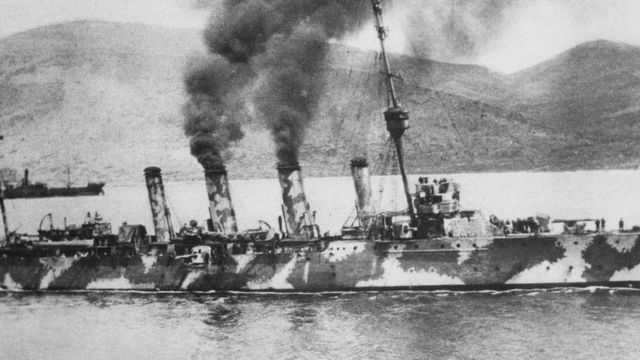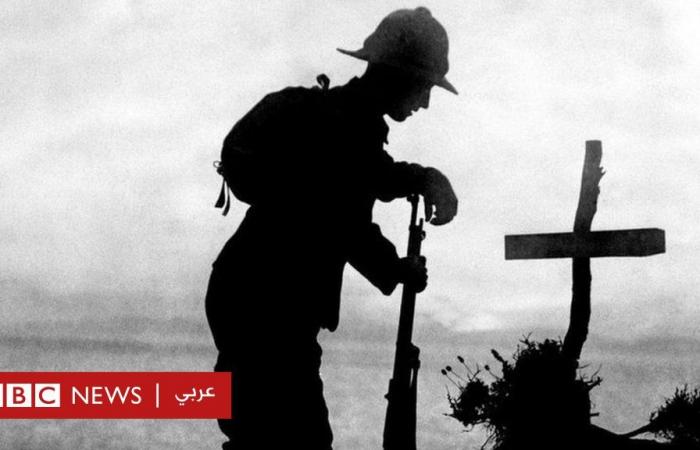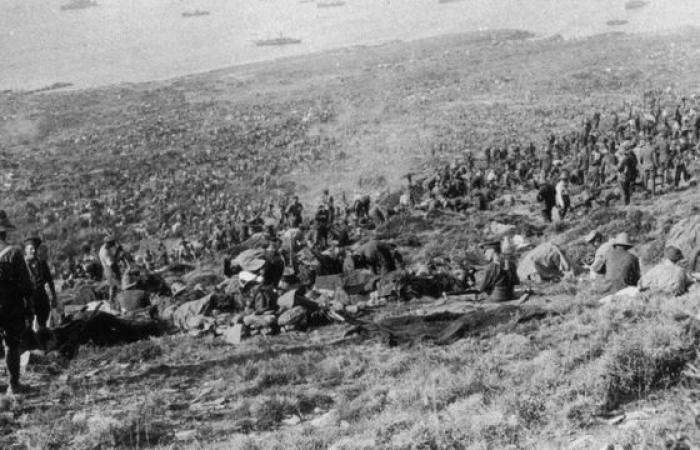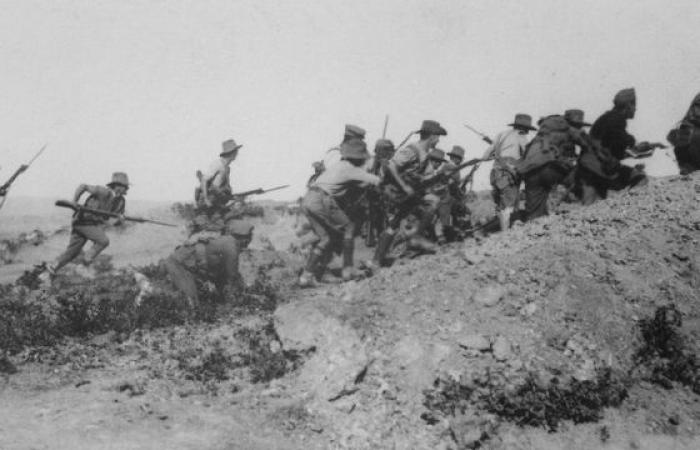
Image Released, HISTORIC ENGLAND
Monument to the Gallipoli victims
The work of renovating the Memorial to the Victims of the Gallipoli Campaign in Farfickshire, Kent, England, has recently been completed, and it is the site where British King George V greeted the forces of the 29th Corps in 1915 before the Corps headed to Gallipoli in Turkey during the events of World War I.
In fact, there are several memorials to the victims of the Battle of Gallipoli in Britain, Australia, New Zealand and others, so what is the story of this battle?
Long months and many blood
This battle began on February 17, 1915 and ended on January 9, 1916 in the Turkish peninsula of Gallipoli during the Allied attempt to capture Constantinople (Istanbul) during World War I.
Hundreds of thousands of casualties on both sides were killed and wounded.
British, French, Indian, New Zealand, Australian and Canadian forces participated in the campaign against the Ottoman Empire forces, which were supported by Germany, and in the end the Allies were forced to withdraw.
Why was the campaign?
After the Ottoman Empire sided with Germany in World War I, the Allies decided to push the Ottomans out of the war.

Image Released, Getty Images
The Allies attempted to capture Istanbul during World War I.
The plan was simple: to sail a huge fleet across the narrow strait of the Dardanelles linking the Mediterranean Sea to Istanbul.
By taking the Ottoman capital, the empire would be severely weakened, and perhaps even surrender.
The plan failed miserably, as the fleet was huge but very old, and many ships were damaged or sunk thanks to the Ottoman cannons and mines, forcing them to retreat.
The Allies drew up plans to invade by land rather than by sea to capture the area and ensure the fleet’s safe passage.
Ground landing
At dawn on April 25, 1915, tens of thousands of Allied soldiers launched an offensive on the strategic Gallipoli peninsula, which served as the key controlling the Dardanelles, the main passage to the Black Sea and Russia.
The campaign included forces from Australia and New Zealand, but Britain participated with the largest share of the forces, and provided 400 thousand soldiers out of a total of half a million soldiers who participated in the military operations on the peninsula.

Image Released, Getty Images
Soldiers faced horrific conditions on the strategic Gallipoli Peninsula
Nigel Steele, a historian at the Imperial War Museum in London, said: “The Gallipoli events have a great resonance, especially with the people of northern and western England.”
“Many men from Lancashire were killed there, and they were more than all the New Zealand forces killed,” he told the BBC.
The landings were catastrophic. Thousands were killed on the first day and the front lines had not moved more than a few hundred meters from the shore during 8 months of fighting, attacks, new landings and counterattacks.

Image Released, Getty Images
Several Allied ships were damaged and drowned
Conditions in the trenches were appalling. Constant bombardments and snipers piled up dead bodies, making the combat zone a breeding ground for flies and disease.
The narrow front line meant that there was no place for proper toilets, and water was scarce, which worsened the soldiers’ health problems.
Amid these terrible circumstances, a strange relationship arose between the enemies. During breaks from the bombing, they would meet from time to time and exchange gifts, and there are stories of some soldiers being allowed to hang laundry on barbed wire without firing at them.
Neither side managed to achieve a decisive victory, and the Allies were forced to withdraw in January 1916.
About 141 thousand soldiers were killed in the battle, including 86 thousand Turkish soldiers and 55 thousand Allied soldiers, including ten thousand Australian and New Zealand soldiers, and hundreds of thousands of soldiers from both sides were wounded.
Post-Gallipoli
After this campaign, the Allies turned their attention to an invasion of the Middle East and conquered the region that now includes Iraq, Israel, Palestine and Syria.
The Battle of Gallipoli witnessed the emergence of the Turkish military leader Mustafa Kemal, who is credited with establishing the modern Turkish republic on the remains of the Ottoman Empire.
For the forces of New Zealand and Australia (the Anzac), this was their first battle. With the passage of years, Gallipoli was perceived by some as an Australian and New Zealand campaign, according to Johnny Diamond, the BBC correspondent in Turkey in 2005, despite the fact that nearly 9,000 French soldiers, 21,000 British and Irish soldiers, in addition to 86,000 Turkish soldiers. They died during the attack on the narrow coastal strip.

Image Released, us national picture archive
None of the veterans was left alive during that battle, although many of their relatives still visited the Anzac Bay, named after the Australian and New Zealand Legion, whose soldiers were killed there.
As Margaret Anderson, director of the History Institute of South Australia said in 2005: “Historians still cannot explain why a so costly military stalemate has become a national myth.”
“Whatever the reasons, Gallipoli was from the outset a national turning point for Australia,” she added.
These were the details of the news Gallipoli: The battle in which hundreds of thousands of Turks and... for this day. We hope that we have succeeded by giving you the full details and information. To follow all our news, you can subscribe to the alerts system or to one of our different systems to provide you with all that is new.
It is also worth noting that the original news has been published and is available at eg24.news and the editorial team at AlKhaleej Today has confirmed it and it has been modified, and it may have been completely transferred or quoted from it and you can read and follow this news from its main source.






